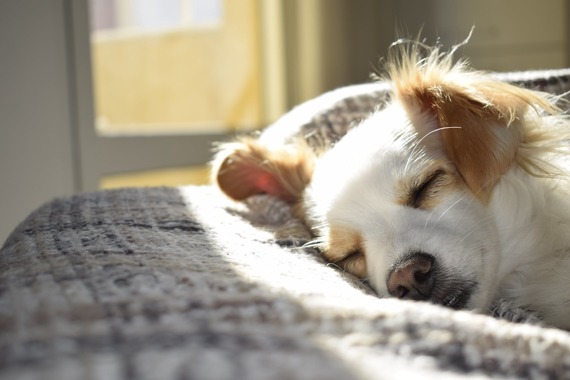When you are pregnant, it is natural to feel anxious and excited. However, if you are a pet owner, you may feel more anxious than other expectant parents. The worry of how your pet will get along with your baby constantly strikes your mind.
But, with proper planning, you can help your cat or dog make a smooth transition from living in a baby-free household to a home that’s focused on demanding newborn babies.
Here is a helpful guide for new parents to handle their new-born baby and pet without any trouble. So, without any further ado, let us see how the pet owners can let their pets know that it still has a special place in their family.
Desensitize your pet before your human-baby arrives
Babies make a lot of noise while crying, which may reach up to 120 decibels! For animals new to this sound, it can be extremely stressful.
Though it is not scientifically proven, playing sounds of babies crying prior to your delivery can be a great way of enabling your pet to get used to the new and unusual sound. You can find the baby sounds on YouTube. You can play the sound quietly when your dog (or any other pet) is relaxed, and gradually increase the volume.
Keep some treats ready and reward your pet every time you play the sound so that they learn the sound is an indicator of good things happening.
Doing so will help your fur-baby ease into the time when your human-baby comes home. You must ensure that all the experiences are positive. The first time your pet meets your baby, keep them on a lead and reinforce behavior in a calm manner, and reward with treats. It is always better to keep the interactions brief and under supervision.

Take care of your pet’s privacy
Just like humans, animals need their own space – where they can retreat for some peace and quiet.
As far as the cats are concerned, they like to be up high. So, try to create ways for them to reach the top of a wardrobe or bookshelf, and provide some comfy bedding there, too.
For your dog, you can cover a crate in a quiet area of the house. But make sure that it is easily accessible and large enough to stretch out in.
By creating these spaces early on, your pet will learn that if they need an undisturbed space, it is available.
Make special time for your pet
Even though you will be exhausted while taking care of your new baby, carving out some special time with your pet can pay off in the long run.
Initially, you may find it hard because you don’t have a lot of energy in the early days. You can set a timer for a few minutes and dedicate that time solely to your pet. Ignoring your pet can make him feel treated unfairly. Sings to look out for include a dog’s urinating inside the home and a cat’s failing to use the litterbox, as well as overgrooming.
A common mistake made by new parents is ignoring or yelling at the pet because your pet will associate that with the new baby.
Your pet deserves the spotlight. You can also add some pet prints in your house to show that your pet still matters. You can create your customized portraits and hang them on your wall.
Introducing baby
Before bringing your child home for the first time, introduce his scent to your fur-baby. You can send home a blanket or any other clothing so that the pet can investigate it. When you come home, great your pet in a calm manner.
You can let the pet approach your baby. But if things get too exciting, rather than banishing the pet, you can take the baby away.
Your behavior towards your pet is very crucial during the transition period.
Try to make every attempt to resume a normal life for the pet. If he was allowed on the sofa before, continue to allow him. Do not discipline your pet every time he comes close to the baby.
Teach your child to read your pup’s behavior
As your child gets older, you can teach your child to look for certain signs in your pup’s behavior. For instance, if your pup has its tail bucked behind his legs or it is licking his lips, chances are it is feeling scared or anxious. Teach your child to walk away from it.
If your child is not walking away, neither he is responding, teach your pup to walk into their safe space. Remember that your child may have trouble reading the dog body language, so active and educated adult supervision is a must.
Teach your child how to interact with your dog, so that they both can have fun. Training, tricks, and other treat games are much more fun for your pet than hugs and kisses from your child. If you are not sure how your dog will react, do not let it approach your child.
If your pet has been the apple of your eye for years, it can come as quite a shock when a new child comes into the family, creating havoc and stealing everyone’s attention.
Jealousy can creep in, which can even pose a threat to your child. You must make a proper plan so that the relationship between your newborn baby and the family pet is a happy and safe one for years to come.












